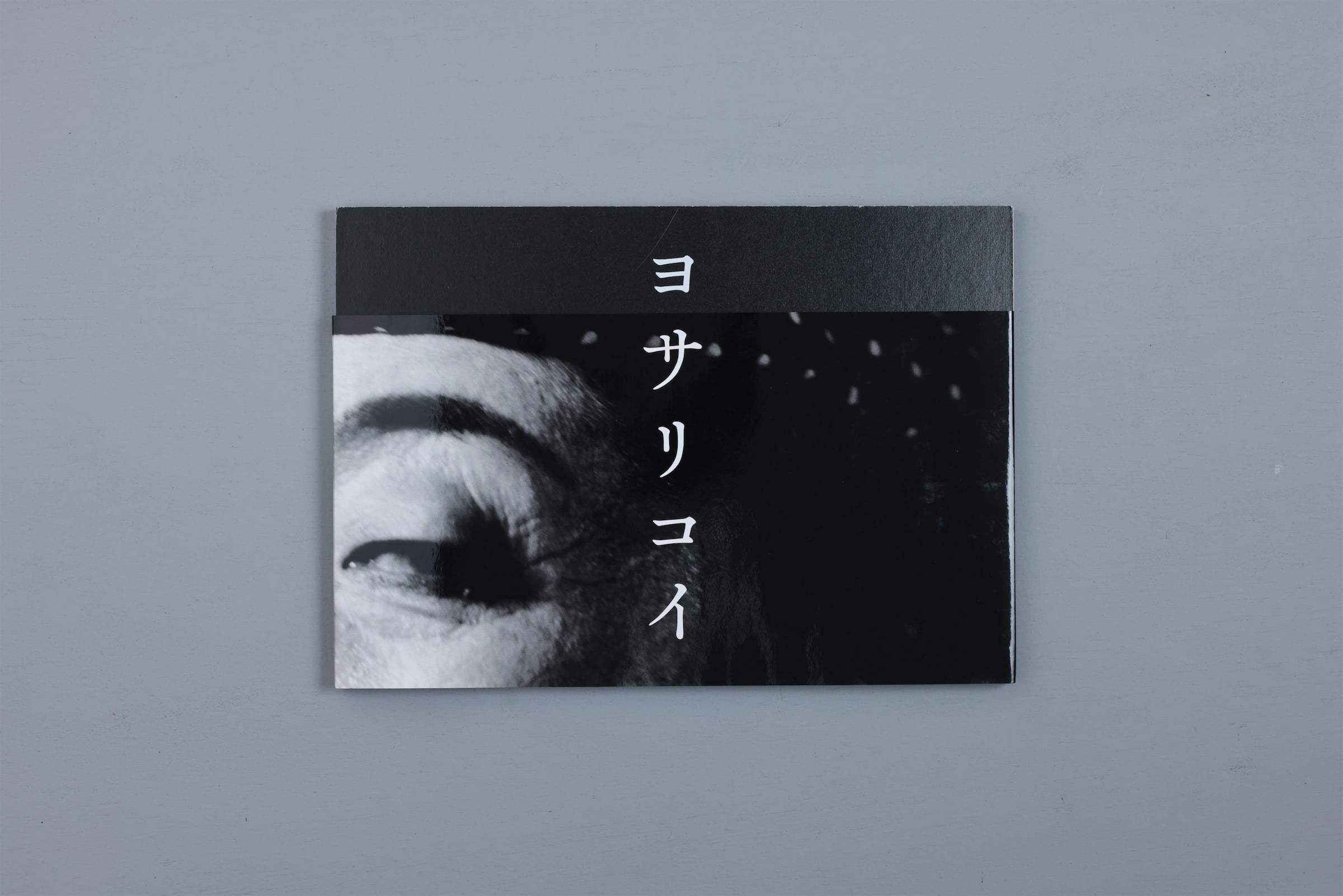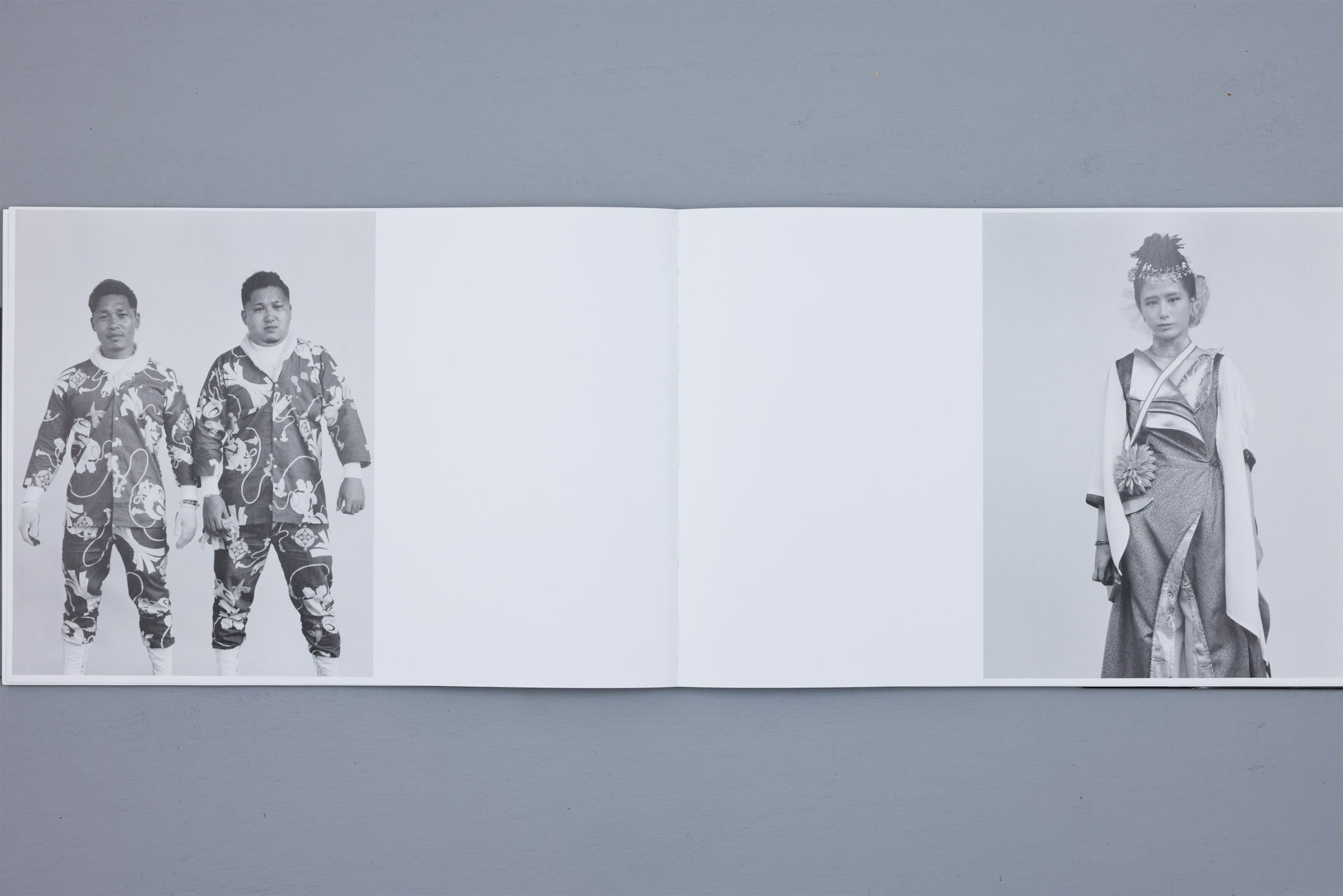Yusuke Abe's photo book “YOSARIKOI”
Tokyo based photographer Yusuke ABE’s 1st photo book is published by 1.3h.
Abe photographed Japanese summer festival “Yosakoi Matsuri” in Kochi prefecture.
A beautiful and large format photo book.














About YOASRIKOI (text by Masaya YAMAWAKA)
A photographer is somebody who has their own unique way of looking at the world. You may be thinking, “Well, doesn’t everyone have that?” Yet, it is actually quite difficult to see the world in your own distinct way. For me and for most of you reading this, we will probably look at the world by determining it in its parts based on our existing values – values that encompass history and context, commonly-held views and prevailing trends, and those to do with function and meaning. We each agree on a certain fixed idea of how something “should be.”
The photographer will present us with their own fresh perspective on things: “This is how I view the world.” For example, you might look at a flower vase and say, “What a shabby-looking vase.” Yet, the photographer may surprise you by saying, “Oh, but isn’t this the profile of a beautiful woman?” It is as if they are engaged in throwing out the standards of things that exist and creating their own from scratch.
The perspectives that photographers and artists bring give a rich color to the world that we see and vastly broaden our view of it. This was the motivation behind my decision to establish the ‘1.3h’ publishing label. The first book to be published by 1.3h is this photobook: ‘Yosarikoi’ by Yusuke Abe.
The first thing to mention is that this text will not explain the meaning behind Abe’s work. The reason is because there is no “correct” meaning to be assigned or analysis to be made of a work created based on an entirely new way of thinking by the photographer. In addition, a photo that gives the viewer one clear answer as to its meaning cannot be said to be particularly profound as a photographic work (although, it may function well as a photo for commercial use).
Let me write a little about Yusuke Abe. He was born in 1989 and is a photographer currently based in Tokyo. With that said, Abe spends a considerable amount of time each year overseas: he has taken photos of the snowy peaks while stranded in the Himalayas, of the people who live in the remote frontiers of Pakistan, and of trees whilst deep in the forests of Yakushima Island.
Although the subjects vary in each of these collections, what comes across in all of them is Abe’s positive impression of the subject that he faced directly with his camera. Doing away with all context and information, there is a straightforward strength to his photographs that appeals to the viewer to appreciate the natural beauty they encompass.
There is a sense of him setting a raw gaze upon the world with a primitive eye. In a society where information is fragmented and its context complicated, it is often difficult to experience relativized beauty in this way. Therefore, when we look at Abe’s photos, we find there is a gentle stimulation of the subtle workings of the human mind that lie forgotten within us.
Turning to this work: ‘Yosarikoi’. It may firstly be necessary to explain what the Yosakoi Festival is. The Yosakoi Festival is a festival that takes place every summer in Kochi Prefecture, and about 200 teams and nearly 20,000 dancers from all over Japan and abroad gather to perform in Kochi City over a three-day period. Brightly decorated vehicles known as jikatasha fitted with sound systems or with bands playing on them lead a procession of colorfully-dressed dancers who hold naruko , which are small wooden clappers.
There are also those who hold the giant furafu flags high above the parade. While there is a requirement that certain traditional rules be followed when it comes to the dance moves and the music played, teams are basically allowed to arrange their dances and the music they dance to as they please.
You will therefore see around 20,000 dancers dressed in their unique costumes moving to anything from rock to samba to electronic dance music from the morning to late in the evening. As several hundreds of thousands of people come to Kochi to witness this spectacle, the city is enveloped in an exuberant festive mode for the whole of the duration of the event. In a nation where festivals tend to follow respected traditions and norms, the Yosakoi is a summer festival that allows for a particularly generous amount of freedom.
I spent a about week with Abe in Kochi for the festival and the days either side of it. Not only were the photos taken during this time; the basic components of the photo collection were also formed while were there. The motive behind Abe’s wish to travel to Kochi was simple: he had been told by a female artist he knows, “You have to photograph the Yosakoi!” and, after considering this for a while, he felt that he needed to go and shoot the festival.
While looking up information about the Yosakoi Festival, it was found that the word yosakoi is derived from the archaic Japanese word yosarikoi – literally, “come at night.” While there are other theories behind the origins of the word, this one in particular strongly attracted our attention. It was thus decided that this photobook take the name, ‘Yosarikoi’.
‘Yosarikoi’ is divided into three parts. The first is a portrait of the dancers who have just finished performing. The second captures a snapshot of Kochi City and its inhabitants during the Yosakoi Festival. The third and final part features close-ups of the dancers as they perform at night.
These are not photographs taken as if for a news story; each captures those at the Yosakoi Festival based on Abe’s original criteria. That is why the so-called “typical” Yosakoi scenes you may see elsewhere tend to be missing and not many of these photos feature people actually dancing.
Even so, we can see here the attraction of the Yosakoi Festival or the innate radiance found in human beings, packed into a captured moment that exudes instantaneous energy. It could be in the costumes that were made especially for this day or the hairstyles and their state of disarray, or perhaps seen in the tensely closed mouths as dancers await their turn to perform. Maybe, it is the moment when, after a day-full of dancing, exhausted performers who have been showered with the applause from thousands of onlookers innocently snap memorial photos with their iPhones.
“To me, everyone here looks beautiful!” says Abe. Taking advantage of Abe’s point of view as seen through these photos, we can also discover this beauty he sees. This collection may present a somewhat different image to the one people may have of the Yosakoi Festival or typically have of Japanese festivals, for that matter. At the same time, it may rather shine a new light from a different direction somewhere within us. And, where that light lands, what we find may be abstract and inconclusive – yet, this is what makes this feeling so meaningful.
[Specification]
Title: YOSARIKOI
Size: B4 horizontal (364×257mm)
Binding: codex binding + card board with cover
Pages: 80 pages
Printing: monochrome (used 2 color inks)
[Staff]
Photography: Yusuke ABE
Edit & Text: Masaya YAMAWAKA (1.3h / MOUTAKUSANDA!!! magazine)
Design: Daisuke ARAKANE (Cumu)
Printing & Binding: Hakkou Bijyutsu